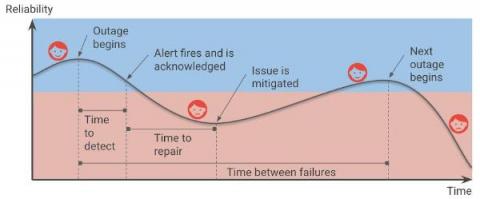Operations | Monitoring | ITSM | DevOps | Cloud
SRE
The latest News and Information on Service Reliability Engineering and related technologies.
Are your SLOs realistic? How to analyze your risks like an SRE
Setting up Service Level Objectives (SLOs) is one of the foundational tasks of Site Reliability Engineering (SRE) practices, giving the SRE team a target against which to evaluate whether or not a service is running reliably enough. The inverse of your SLO is your error budget — how much unreliability you are willing to tolerate.
How to Achieve Measurable Reliability Results
The Reverse Red Herring
CI/CD Pipeline | What It Is & How It Works
NewsKit API: The journey of building reliability into our systems at News UK
How To Reduce Technical Debt
Technical debt is the implied cost of the additional work that is required when a team chooses a quick, easy solution that is limited, instead of a more well-thought-out, higher-quality solution that would take longer. Essentially, it’s what happens when teams prioritize speed over quality. Examples of technical debt include untested code, unreadable code, dead code, duplicated code, or outdated documentation.
Objectively Speaking: Understanding the Power of Objectives
Objectives help monitor different aspects of your services and systems such as latencies, error rates, PRs that are open, the age of a bug, and more. These are examples of things that drift away from what we think is good; which is essentially what an objective is. Objectives help us to define what ‘good’ looks like.
How Do You Measure Technical Debt?
Technical debt is one of the trade-offs today’s software teams make to speed up development, which helps go-to-market time in return. That is mission-critical for most start-ups. Instead of dwelling on implementation details, or trying to cover edge cases that may affect a small fraction of the end-users in an early development stage, agile teams prioritize early and continuous delivery.











